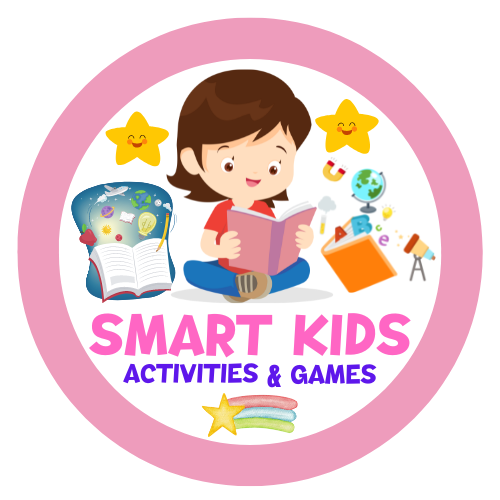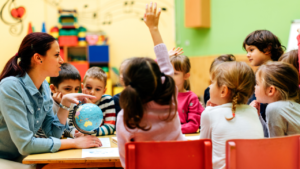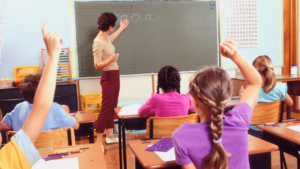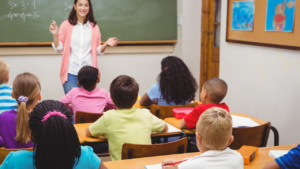Key Takeaways:
- Classroom teaching strategies are essential for supporting student learning and engagement.
- Effective teaching methods involve innovative approaches that encourage active participation.
- Visualization, teamwork, inquiry-based teaching, and technology integration are among the strategies that enhance student engagement.
- By catering to different learning styles, teachers can create an inclusive learning environment.
- Constantly renewing teaching strategies is crucial to meet the evolving needs of students.
Visualization: Enhancing Learning Through Visual Means
Visualization is a powerful teaching strategy that greatly enhances the learning process by utilizing visual means to convey information. By presenting information in a visual form, such as through flow charts, graphic organizers, concept maps, and Venn diagrams, students are able to better comprehend and retain the content being taught. These visual tools help to simplify complex concepts, increase understanding, and promote critical thinking skills. One of the key benefits of using visualization in the classroom is its effectiveness in catering to the needs of different learning styles, particularly visual learners. Visual learners thrive when presented with information visually, as it allows them to process and internalize knowledge more efficiently. By incorporating visual tools and techniques into teaching, educators can create a learning environment that supports and engages visual learners, ultimately leading to improved academic performance. Moreover, visualization is particularly advantageous for lower-attaining learners, as it provides them with a simplified and organized way of receiving information. By breaking down complex ideas into visual representations, these learners are better able to grasp and make sense of the content being taught. The use of visualization in the classroom not only promotes inclusivity but also encourages active participation and academic success for all students.“Visualization is like a mental scaffold that supports students in building connections between concepts and understanding the bigger picture.”
The Power of Visualization
The power of visualization lies in its ability to transform abstract concepts into concrete and relatable representations. It encourages students to engage with the content on a deeper level, fostering a greater sense of curiosity and inquiry. Through visualization, students are able to connect ideas, identify patterns, and develop a more comprehensive understanding of the subject matter.| Benefits of Visualization in the Classroom | Examples of Visual Tools |
|---|---|
|
|
Teamwork: Promoting Collaboration and Peer Learning
Teamwork is an essential teaching strategy that fosters collaboration and peer learning in the classroom. By dividing the class into small groups and assigning different tasks, teachers can create an environment that encourages cooperative learning. The use of mixed ability groups allows students of different skill levels to work together, promoting mutual support and understanding. Through teamwork, students develop important social skills, including communication, problem-solving, and critical thinking. Cooperative learning not only enhances academic performance but also creates a sense of belonging and community among students. When students work together, they learn from each other’s perspectives and build empathy. It also promotes active engagement as students take ownership of their learning and contribute to the collective success of the group. By working collaboratively, students gain a deeper understanding of the subject matter and develop lifelong skills that extend beyond the classroom. Furthermore, teamwork encourages students to take on different roles within the group, fostering leadership and responsibility. Students learn to appreciate and value the strengths and contributions of their peers, enhancing their social competence and self-esteem. It is important for teachers to create a well-managed and supportive environment that encourages teamwork and provides guidance to ensure equitable participation and successful outcomes for all students.Benefits of Teamwork in the Classroom
- Promotes collaboration and peer learning
- Develops social skills such as communication and problem-solving
- Enhances academic performance and understanding
- Cultivates a sense of belonging and community
- Fosters leadership, responsibility, and self-esteem
“Teamwork is the ability to work together toward a common vision. It is the fuel that allows ordinary people to achieve extraordinary results.” – Andrew Carnegie
| Strategies | Advantages |
|---|---|
| Small group assignments | Encourages collaboration and cooperation |
| Mixed ability groups | Promotes learning from peers with different skill levels |
| Role assignments | Fosters leadership and responsibility |
Inquiry-Based Teaching: Fostering Curiosity and Independent Learning
Inquiry-based teaching is a powerful approach that encourages students to be actively involved in their own learning process. It fosters curiosity, critical thinking, and problem-solving skills. By engaging students in open-ended questions and investigations, teachers can stimulate their natural desire to explore and discover. This teaching strategy promotes a sense of ownership and independence in students, as they take charge of their learning journeys. Through inquiry-based teaching, students learn to ask meaningful questions, conduct research, and analyze and interpret information. This process not only deepens their understanding of the subject matter but also enhances their ability to apply knowledge in real-world situations. It empowers students to become active participants in their education, preparing them for lifelong learning and success.“Inquiry-based teaching encourages students to become critical thinkers, problem solvers, and lifelong learners.”Formative assessments play a crucial role in inquiry-based teaching. These assessments provide valuable feedback to both teachers and students, allowing them to monitor progress, identify areas of improvement, and adjust instruction accordingly. By using formative assessments, teachers can guide students’ inquiry process, provide timely interventions, and support their learning needs. This ongoing feedback loop ensures that students stay on track and make continuous progress towards their learning goals.
Benefits of Inquiry-Based Teaching
- Promotes curiosity and intrinsic motivation
- Develops critical thinking and problem-solving skills
- Enhances information analysis and interpretation
- Fosters independent and lifelong learning
- Encourages collaboration and communication
- Prepares students for real-world challenges
| Formative Assessments in Inquiry-Based Teaching | Benefits |
|---|---|
| Observations and check-ins | Evaluate student progress and engagement |
| Concept maps and graphic organizers | Organize and visualize student thinking |
| Student reflections and self-assessments | Promote metacognition and self-awareness |
| Peer feedback and collaborative discussions | Encourage constructive peer learning |
Student-Led Classroom: Empowering Students to Take Ownership
A student-led classroom is an innovative teaching approach that empowers students to take ownership of their learning journey. In this type of classroom environment, students are actively involved in the decision-making process, allowing them to develop essential skills such as leadership, self-awareness, and self-direction. By giving students more autonomy and encouraging them to be active participants in their education, teachers can foster a sense of responsibility and engagement that ultimately leads to better learning outcomes. One of the key aspects of a student-led classroom is student empowerment. When students have the opportunity to make choices about their learning, they become more engaged and motivated to succeed. This empowerment encourages them to take ownership of their education and develop a sense of intrinsic motivation. Students are encouraged to set goals, track their progress, and reflect on their learning, which enhances their self-awareness and helps them develop important metacognitive skills. Moreover, a student-led classroom focuses on the development of soft skills, such as communication, collaboration, and critical thinking. These skills are essential in today’s rapidly changing world and play a crucial role in preparing students for future success. By creating a classroom environment that encourages active participation, group work, and problem-solving, teachers can help students develop these skills, equipping them with the tools they need to thrive in their personal and professional lives. In conclusion, a student-led classroom empowers students to become active participants in their education, fostering a sense of ownership, engagement, and self-awareness. By giving students more autonomy, teachers can promote student empowerment, develop important soft skills, and create a dynamic learning environment that prepares students for future success.Implementing Technology in the Classroom: Enhancing Learning with Technology
Technology has become an integral part of today’s classrooms, revolutionizing the way students learn and teachers instruct. The incorporation of classroom technology offers numerous benefits, including enhanced engagement, collaboration, and the creation of a more inclusive learning environment. Virtual classrooms, augmented reality, and other technological tools provide educators with exciting opportunities to optimize the learning experience. Active learning, one of the effective teaching strategies, complements the use of technology in the classroom. Students actively participate in the learning process, fostering better engagement and critical thinking. Interactive software, educational applications, and online platforms allow students to explore and interact with the subject matter, making learning more dynamic and immersive. The use of virtual classrooms enables students and teachers to connect and collaborate beyond traditional physical boundaries. It facilitates remote learning, ensuring that education remains accessible even in challenging circumstances. Augmented reality, on the other hand, brings learning to life by overlaying digital content onto the real world. This technology enables students to visualize complex concepts, explore simulations, and engage in interactive experiences that enhance comprehension and retention.“Technology in the classroom not only enhances the learning experience but also helps students develop digital literacy skills that are essential for today’s society.” – Educator John Smith
The Benefits of Implementing Technology in the Classroom:
- Increased student engagement and motivation
- Improved collaboration and communication among students
- Access to a broader range of resources and information
- Enhanced critical thinking and problem-solving skills
- Personalized learning experiences tailored to individual student needs
- Real-world application of knowledge through interactive simulations
- Opportunities for students to develop digital literacy skills
- Preparation for future careers in a technology-driven world
| Classroom Technology | Benefits |
|---|---|
| Virtual Classrooms | Enables remote learning and collaboration |
| Augmented Reality | Enhances comprehension and visualization of complex concepts |
| Interactive Software | Engages students in active learning and problem-solving |
| Educational Applications | Provides access to a wide range of educational resources |
Active Learning: Promoting Student Participation and Interaction
Active learning is a teaching strategy that places students at the heart of the learning process, encouraging their active participation and interaction. By actively engaging with the material, students develop a deeper understanding of the subject matter and enhance their critical thinking skills. Through collaborative learning activities, students can work together in groups, share ideas, and solve problems, fostering a supportive and dynamic learning environment. Active learning techniques, such as reciprocal questioning and the pause procedure, help students actively pursue knowledge and take ownership of their learning. Reciprocal questioning involves students asking each other questions to promote deeper comprehension and critical thinking. The pause procedure encourages students to pause and reflect on what they have learned, allowing them to solidify their understanding and make connections between concepts.Promoting Student Engagement
Active learning strategies are highly effective in promoting student engagement. They provide opportunities for students to actively participate, contribute their thoughts and ideas, and engage in discussions. This active engagement not only improves retention and comprehension but also enhances motivation and enthusiasm for learning. By actively involving students in the learning process, teachers create a vibrant and interactive learning environment that fosters a love for knowledge and encourages students to become lifelong learners. Collaborative learning is an essential component of active learning. By working together in groups, students develop their communication and teamwork skills. They learn to respect diverse perspectives and engage in constructive dialogue, developing a broader understanding of the subject matter. Collaborative learning also cultivates critical thinking skills as students learn to analyze and evaluate different viewpoints, leading to more well-rounded and informed decision-making.| Benefits of Active Learning |
|---|
| Enhanced student engagement |
| Improved critical thinking skills |
| Increased retention of information |
| Development of teamwork and communication skills |
| Improved motivation and enthusiasm for learning |
Visual Strategies: Enhancing Visual Learners’ Understanding
Visual strategies play a crucial role in enhancing the learning experience of visual learners. These learners rely on visual cues to process information effectively. By incorporating various visual aids and techniques, educators can create a more engaging and accessible learning environment for these students.Visual Aids
One of the key visual strategies is the use of visual aids. Colorful illustrations, pictures, charts, graphs, and multimedia presentations can all help visual learners grasp and retain information more easily. These visual aids provide a visual representation of complex concepts, making it easier for students to understand and remember the content. When utilizing visual aids, it’s essential to ensure that they are clear, well-designed, and visually appealing to capture the learners’ attention.Multimedia Presentations
Incorporating multimedia presentations is another effective way to engage visual learners. Adding videos, animations, and interactive elements to the lesson can bring the subject matter to life. This approach not only captures students’ interest but also helps them visualize abstract ideas and processes. By leveraging technology, educators can create a dynamic and immersive learning experience that caters to the needs of visual learners.“Visual strategies, such as colorful illustrations and multimedia presentations, help visual learners grasp and retain information more easily.”
Handouts and Outlines
Providing handouts and outlines can further support visual learners in organizing and processing information. These materials serve as reference points and enable students to review key concepts at their own pace. Additionally, using bullet point lists in handouts and outlines can help visual learners follow the flow of information and identify important details. Clear and concise written information complements the visual content, facilitating a comprehensive learning experience.| Visual Strategies | Benefits |
|---|---|
| Visual aids | Enhances understanding and retention of information |
| Multimedia presentations | Engages visual learners through dynamic and interactive content |
| Handouts and outlines | Provides supplementary written information for better organization and review |
Auditory Strategies: Engaging Auditory Learners
Auditory learners are individuals who grasp information best through listening and talking. To effectively engage and support these learners in the classroom, teachers can employ various auditory strategies that cater to their learning style. By incorporating activities such as discussion groups, reading aloud, and vocal collaboration, educators can create an environment where auditory learners thrive. Discussion groups provide auditory learners with the opportunity to actively participate in class discussions and exchange ideas with their peers. Through dialogues, these learners can engage and absorb information by listening to different perspectives and articulating their thoughts aloud. The dynamic nature of discussion groups promotes critical thinking and helps auditory learners deepen their understanding of the topic at hand. Reading aloud is another effective strategy that benefits auditory learners. By reading passages or texts aloud in the classroom, teachers provide auditory learners with the opportunity to absorb information through their sense of hearing. This strategy helps reinforce comprehension, as auditory learners can focus on the pronunciation, intonation, and rhythm of the reading, enhancing their overall understanding of the material. Vocal collaboration is a valuable auditory strategy that encourages learners to express their reasoning and reflect on their understanding. By engaging auditory learners in interactive activities that involve vocal expression, such as debates, presentations, or group projects, teachers enable these learners to effectively communicate their thoughts and engage in meaningful collaboration. Vocal collaboration strengthens auditory learners’ grasp of the subject matter and fosters an environment of active learning and participation.| Benefits of Auditory Strategies for Learners | Examples of Auditory Strategies |
|---|---|
| Enhanced engagement | Discussion groups |
| Improved comprehension | Reading aloud |
| Enhanced communication skills | Vocal collaboration |
“Engaging auditory learners through discussion groups and vocal collaboration creates an inclusive learning environment where they can excel.”By implementing auditory strategies, teachers can ensure that auditory learners are actively engaged, develop their communication skills, and achieve optimal learning outcomes. These strategies, when combined with other effective teaching methods, contribute to a comprehensive and inclusive classroom environment that supports the diverse learning needs of all students.
Reading & Writing: Supporting Text-Based Learners
Reading and writing strategies play a crucial role in supporting text-based learners, who thrive in an environment where written information is presented clearly. These learners benefit from activities that involve reading, note-taking, and the use of bullet point lists. By incorporating these strategies, educators can foster a more inclusive and effective learning experience for text-based learners. One effective strategy is to provide written information through handouts, worksheets, and text-heavy resources. This allows text-based learners to engage with the material at their own pace, making it easier for them to digest and retain information. Additionally, encouraging note-taking during lectures or discussions enables these learners to actively process information and organize their thoughts. By jotting down key points and summarizing concepts in their own words, text-based learners can better understand and internalize the subject matter. Furthermore, the use of bullet point lists can enhance the learning experience for text-based learners. Breaking down complex information into concise and digestible points allows these learners to grasp the main ideas more efficiently. Bullet point lists provide a clear structure and facilitate quick comprehension, enabling text-based learners to navigate through the content easily. This strategy also encourages critical thinking as learners are prompted to consider the relationship between different points and identify key connections within the material.Integrating reading and writing strategies is essential for supporting text-based learners in the classroom. By providing written information, encouraging note-taking, and utilizing bullet point lists, educators can create an environment that caters to the needs of these learners and enhances their understanding and retention of the content.
Table: Comparison of Reading and Writing Strategies
| Strategy | Benefits |
|---|---|
| Handouts and worksheets | Allows learners to engage with written information at their own pace |
| Note-taking | Enables learners to actively process and organize information |
| Bullet point lists | Facilitates quick comprehension and helps learners navigate through content |
Conclusion
Incorporating a variety of classroom teaching strategies and effective teaching methods is crucial for creating an optimal learning environment. By utilizing student engagement strategies and instructional techniques, educators can enhance student learning outcomes. Visual strategies, such as the use of visual aids and colorful illustrations, help cater to the needs of visual learners and make complex content more accessible. Teamwork and collaborative learning promote student interaction and peer learning, fostering a supportive classroom environment. Inquiry-based teaching encourages student curiosity, problem-solving skills, and independent learning. By fostering a student-led classroom, teachers empower students to take ownership of their learning and develop important soft skills like self-awareness and responsibility. Integrating technology in the classroom not only enhances student engagement but also creates a more inclusive learning environment. Active learning strategies, such as reciprocal questioning and the pause procedure, encourage critical thinking and active participation. Ultimately, by employing a combination of these teaching strategies, teachers can create a dynamic and effective learning environment that maximizes student engagement, promotes critical thinking, and facilitates optimal learning outcomes.FAQ
What are teaching strategies?
Teaching strategies are the techniques and methods that a teacher uses to support student learning.
Why is it important for teachers to use a combination of teaching strategies?
Using a combination of teaching strategies enhances student engagement and promotes optimal learning outcomes.
What are some popular teaching strategies?
Some popular teaching strategies include visualization, teamwork, inquiry-based teaching, and student-led classrooms.
How can visualization enhance learning?
Visualization is a useful technique for processing and summarizing knowledge in a visual form, helping students retain and understand information more effectively through visual memory.
How does teamwork promote learning?
Teamwork involves dividing the class into groups to complete tasks, improving collaboration and helping students succeed.
What is inquiry-based teaching?
Inquiry-based teaching encourages students to ask questions and work together to solve problems, promoting practical thinking and independent learning.
What are the benefits of a student-led classroom?
A student-led classroom gives students autonomy, fosters self-awareness of their strengths, and promotes the development of soft skills.
How can technology be integrated into the classroom?
Technology, such as PowerPoint presentations, videos, virtual classrooms, and augmented reality, can enhance the learning environment, improve engagement, collaboration, and gather data on student performance.
What is active learning?
Active learning puts students at the center of the learning process, promoting student participation and interaction for better engagement and understanding.
How can visual strategies enhance learning for visual learners?
Visual strategies, such as pictures, charts, and colorful illustrations, cater to the needs of visual learners and make complex content more accessible.
How can auditory strategies engage auditory learners?
Auditory strategies, such as discussion groups and reading aloud, cater to the preferences of auditory learners by focusing on listening and talking.
What strategies support text-based learners?
Reading and writing strategies, such as providing written information and encouraging note-taking, support text-based learners in understanding and retaining information.
Source Links
- https://www.prodigygame.com/main-en/blog/teaching-strategies/
- https://www.structural-learning.com/post/teaching-and-learning-strategies-a-classroom-guide
- https://thirdspacelearning.com/us/blog/teaching-strategies/
Download free activities and teaching resources Click Here
You may also be interested in
Exploring Modern Teacher Aids: Enhancing Classroom Success Empowering Future Learners with Early Childhood EducationBoosting Kids Engagement in Classroom Activities: Tips and Techniques
Unlocking Learning Potential with Flipped Classroom Methods
Unlocking Potential: A Guide for Every Substitute Teacher






